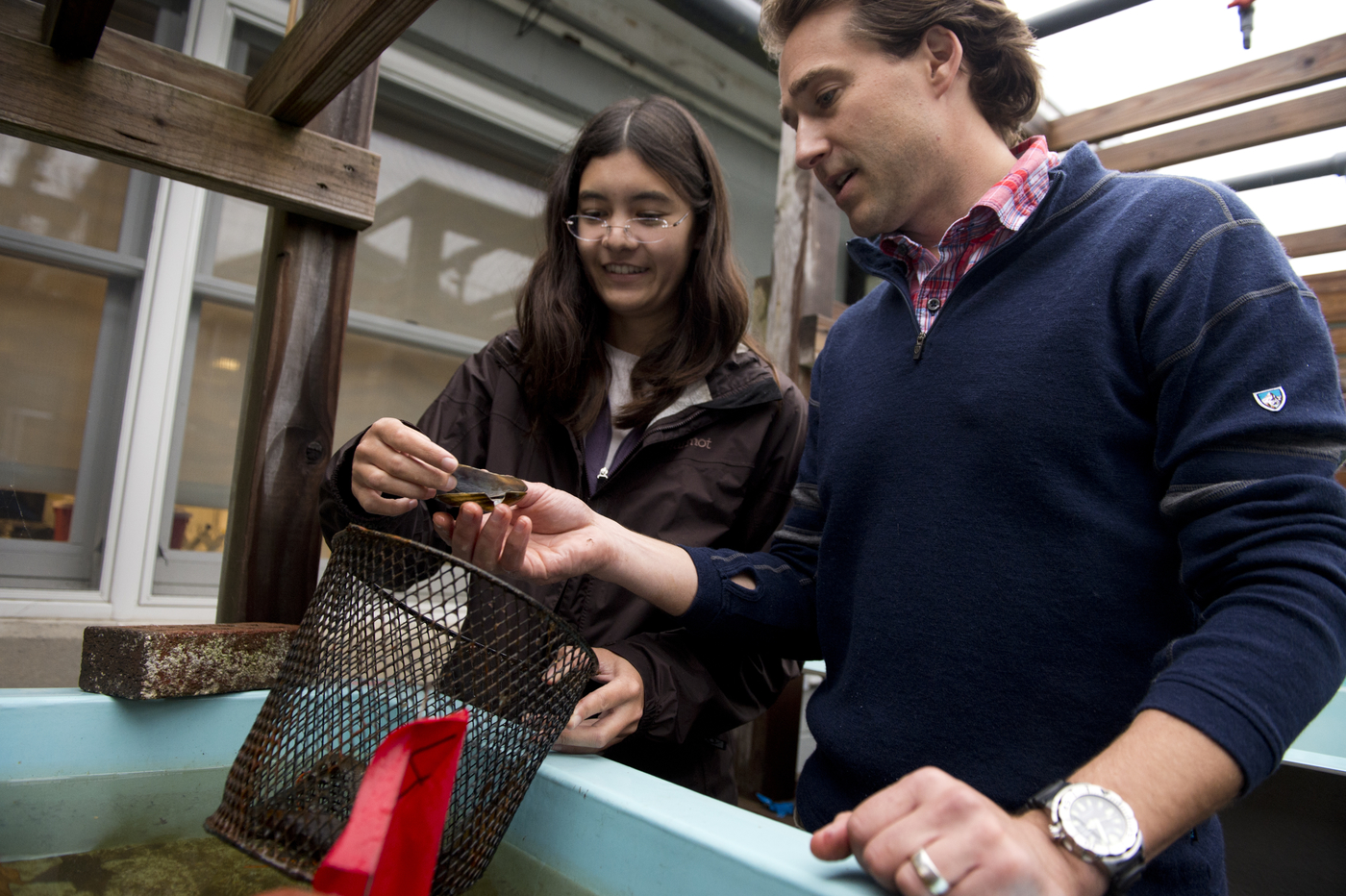 by Casey Bayer
by Casey Bayer
What happens when a drought in Florida estuaries causes a rise in the salt levels in water? Fewer wild oysters appear on restaurant menus, for starters.
New research from Northeastern University marine and environmental sciences professor David Kimbro and graduate student Hanna Garland, published in PLOS ONE, links the deterioration of oyster reefs in Florida’s Matanzas River Estuary (MRE) to a population outbreak of carnivorous conchs and high water salinity—or saltiness—caused by a prolonged regional drought.
This isn’t just bad news for oyster lovers.
“Coastal ecosystems around the world depend greatly on the services provided by oysters,” Kimbro said. “They are important for the stabilization of shorelines, filtration of coastal water, protection of important economically valuable fishes and invertebrates, and the removal of excess nitrogen.”
As a result of degradation, overharvesting, and human activity, the global abundance of this habitat has declined by 85 percent, according to the Nature Conservancy. Today, most of the world’s remaining reefs are concentrated in only six eco-regions—four in the United States.
“Luckily, there are government and non-government-led efforts that will begin to restore this habitat in 15 different states,” Kimbro said. “But if an area to be restored contains or is likely to develop an outbreak of conchs like the one in Matanzas, then the restoration effort will fail, regardless of the expenditure of effort or expense, unless the salinity and conch problem is first solved.”
When one of these eco-regions experiences an environmental stress, like that seen in the Floridian estuary, the impact can be felt across industry and ecosystems.

An underwater photograph shows a conch that sticks its proboscis out to detect and then pry open a nearby oyster. Photo courtesy of David Kimbro.
“Environmental change and consumer pressure—the conchs being the consumer—can impact foundation species like oysters on their own,” Kimbro said. “But we have a case here where it is the interaction between the two stressors that is causing the greatest impact on the decline of the oysters.”
The team found in this case that conchs reproduce better in water with a high salinity. Because of the deficit of freshwater and increase in salinity from the drought, conch larvae proliferated, resulting in an abundance of the conch, which then led to a greater consumption of oysters on the reef.
While the team determined the conch population outbreak to be the proximal cause of oyster loss, it is the salinity of the water spurred by the multi-year drought that is the ultimate cause, because that is what led to a spike in the carnivorous conch population.
Kimbro says there is optimism the reef could recover if the high salinization subsides. And a normalized conch population can actually be beneficial to oyster reproduction—after conchs pry open the oyster valves to consume the tissue inside, they leave behind a clean internal cavity, which oyster larvae can then use for its own development.
This research, along with additional studies on the conch-oyster dynamic in this eco-region could prove vital to oyster reef conservation efforts.
Originally published in news@Northeastern on August 14, 2015.
